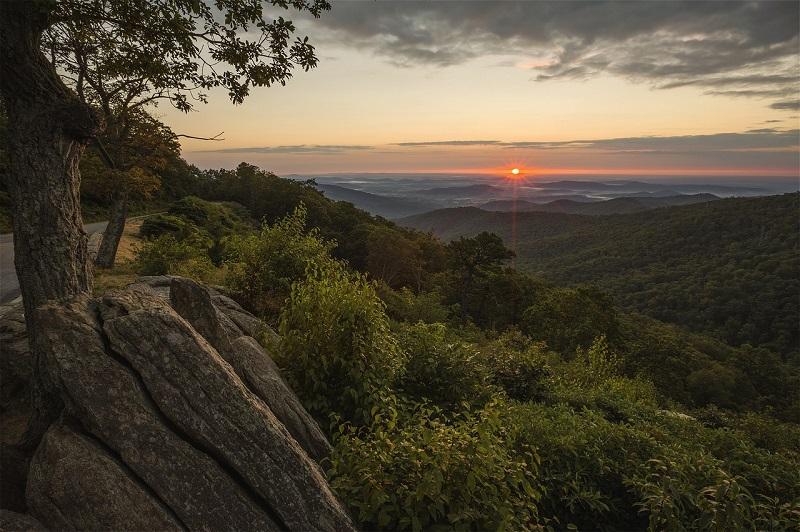
Sunrise over the mountains / Pixabay.
Shenandoah National Park, which protects more than 200,000 acres in the mountains of Virginia, is famous for its recreation opportunities, scenic vistas, and wildlife viewing. The park is also home to one of the longest continuous monitoring studies in the National Park System, a research initiative interrupted by the government shutdown. No sampling has been undertaken in more than three weeks - the longest data gap in the entire project.
The Shenandoah Watershed Study began to examine the effects of acid rain in the Mid-Atlantic forests, and since expanded to include additional research questions about biogeochemical cycles, native trout populations, and more. In addition to establishing baseline data for the park, the research has been used to quantify effects of air pollution on natural systems both in public policy debates as well as court cases. According to the University of Virginia Magazine (the institution running the study), 14 streams are monitored within the national park, including eight quarterly and five weekly.
In addition to shedding light on ecological processes within streams and rivers, the Shenandoah Watershed Study is a proving ground for future scientists, training students in monitoring techniques, equipment, and data analysis.
The team measures stream width, flow, depth, and chemical parameters. The longer this gap in the data grows, the greater effect the government shutdown will have on future analyses. Once sampling dates are missing, they are gone forever.
The interruption in the monitoring was something former National Park Service Director Jon Jarvis feared the ongoing partial government shutdown might cause.
"It all just grinds to a halt," Jarvis told the Traveler last week when asked about all the planning work that is done year-round throughout the system. "I think there are a number of things that are not very obvious to the general public, like the trash and toilets (are), that are pretty consequential when you have a shutdown. I’ve been talking to some of my former colleagues about things like the long-term inventory monitoring sites that are incredibly important to understanding ecosystems, and particularly climate change. These things require regular data collection, and if you interrupt that data collection with a blank, you basically bifurcate that data set into two datasets or more, and undermine its scientific relevancy and credibility."



Add comment